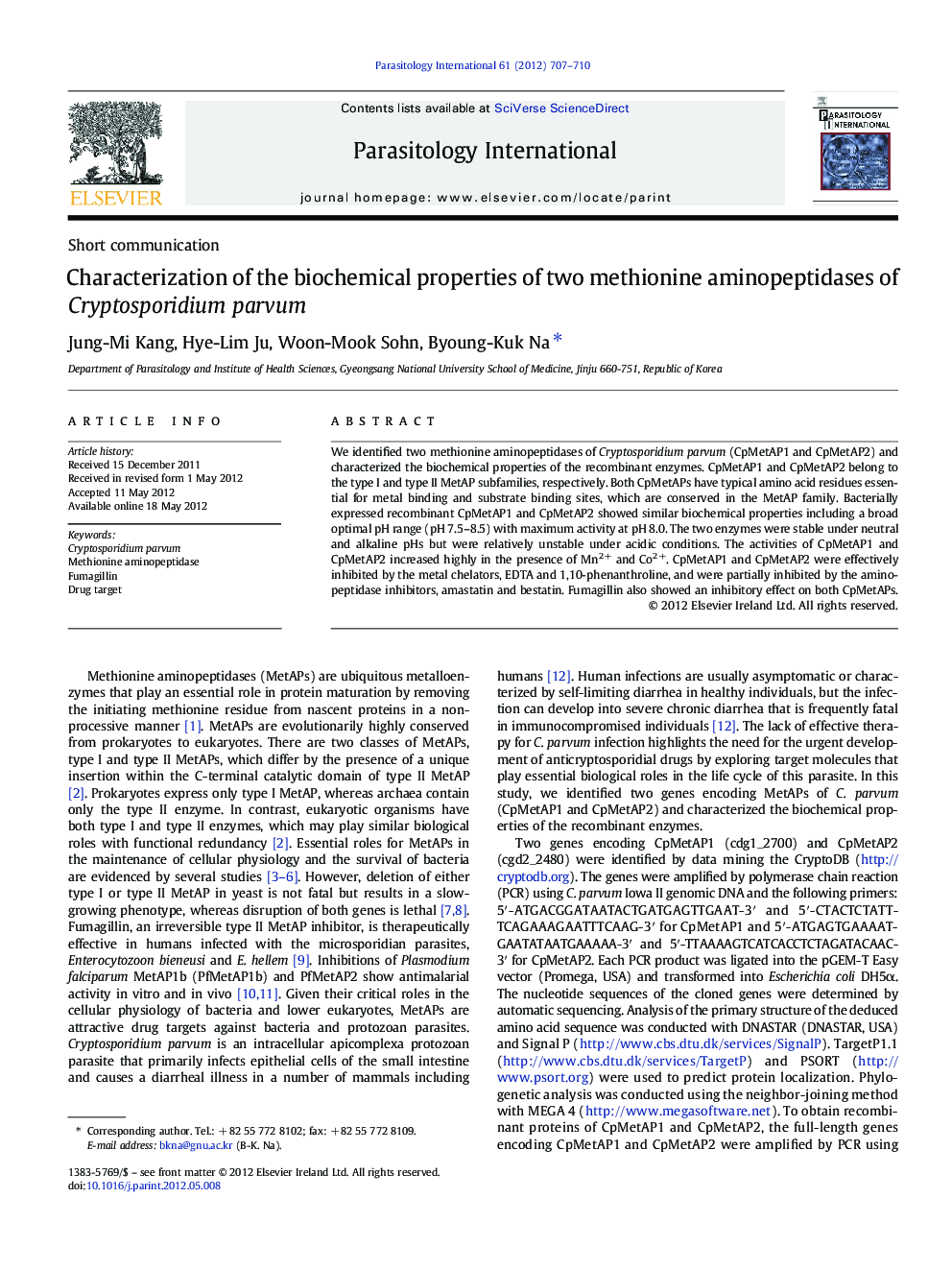| Article ID | Journal | Published Year | Pages | File Type |
|---|---|---|---|---|
| 6137110 | Parasitology International | 2012 | 4 Pages |
We identified two methionine aminopeptidases of Cryptosporidium parvum (CpMetAP1 and CpMetAP2) and characterized the biochemical properties of the recombinant enzymes. CpMetAP1 and CpMetAP2 belong to the type I and type II MetAP subfamilies, respectively. Both CpMetAPs have typical amino acid residues essential for metal binding and substrate binding sites, which are conserved in the MetAP family. Bacterially expressed recombinant CpMetAP1 and CpMetAP2 showed similar biochemical properties including a broad optimal pH range (pH 7.5-8.5) with maximum activity at pH 8.0. The two enzymes were stable under neutral and alkaline pHs but were relatively unstable under acidic conditions. The activities of CpMetAP1 and CpMetAP2 increased highly in the presence of Mn2+ and Co2+. CpMetAP1 and CpMetAP2 were effectively inhibited by the metal chelators, EDTA and 1,10-phenanthroline, and were partially inhibited by the aminopeptidase inhibitors, amastatin and bestatin. Fumagillin also showed an inhibitory effect on both CpMetAPs.
Graphical abstractTwo methionine aminopeptidases of Cryptosporidium parvum showed similar biochemical properties and were effectively inhibited by aminopeptidase inhibitors and fumagillin.Download full-size imageHighlights⺠We characterize the biochemical properties of two methionine aminopeptidase of Cryptosporidium parvum. ⺠CpMetAP1 and CpMetAP2 shared similar structural and biochemical properties with type I and type II MetAPs, respectively. ⺠CpMetAP1 and CpMetAP2 were effectively inhibited by aminopeptidase inhibitors and fumagillin.
